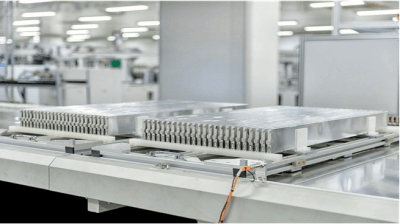What do you have to know about Altitude Simulated Test Chamber?
Nowadays, battery is widely used in various fields as a storage method of renewable energy. In addition, the research on battery has been deepening, which makes the scope of its application gradually expanded from ordinary electronic equipment, electrical machinery, etc. to the power battery of electric vehicles and important components of aerospace equipment and so on.
The widespread application of batteries is not only the credit of battery safety detection, but also the batteries without various safety technical standards can not be applied to the energy power system of general electronic and mechanical equipment. The batteries in scientific research direction, let alone, safety and stability are placed first. Because the battery test covers a wide range, this paper takes the stability of the battery in the high and low pressure environment as the foothold. Through the introduction and comparison of three products of our company, the relevant knowledge of the high altitude low pressure simulation environment test chamber is presented as far as possible.
Simulation test of high altitude low pressure:
During the transportation of batteries through space transport tools such as aircraft, the altitude will be continuously improved and finally the appropriate navigation altitude will be reached. The oxygen content in the air will gradually decrease, the atmospheric density will also gradually decrease, and the atmospheric pressure will gradually decrease. For this kind of test, it is very important to test on the ground at normal altitude, which saves a lot of cost. The high altitude and low pressure simulation test machine is the best choice, and the most direct feature is to pump the air in the machine cavity through vacuum pump to achieve the effect of simulating the decrease of atmospheric pressure. For the battery providing power, it is necessary to bear the change of pressure difference inside and outside first. It can not make the shell of the battery deform due to the change of external pressure environment, which affects the physical function, and then it is the electronic performance inside the battery. Since there is little material exchange between the battery and the atmosphere, it will not be affected by the change of various gas content. However, the change of pressure may cause the change of the internal structure of the battery, and have a certain impact on the charge and discharge characteristics of the battery, and the high altitude low air pressure has a certain impact on the battery heat dissipation, and even the risk of explosion will occur during the detection process. Therefore, it is of great significance to study the influence of altitude on battery performance for battery development, use and test evaluation.
How to choose the appropriate high altitude low pressure simulation test chamber?
Please refer to the following three general altitude simulated test chambers
1.Altitude Simulation Test chamber

The equipment is a multi-in-one structure, and the door with explosion-proof lock and explosion-proof chain has a very reliable guarantee in the proper test range. This product is designed for battery cell testing, and the volume of conventional models will be relatively small:
- Internal Chamber Dimension W600xD600xH600 mm
- External Chamber Dimension W940xD780xH1620 mm
Therefore, the space of the test site is relatively small, so there is no need to worry about the small internal cavity. If the test scale is large, more testing equipment can be safely added in the limited space. Of course, you can also customize the right volume as needed, which is completely possible. In addition, because the volume of the test chamber is small, in order to ensure the stability of the vacuum state of the inner cavity, the charging and discharging ports are not set at both ends as other machines, but instead, the terminal posts are set inside the cavity. The conventional power supply can reach 220V 1kW, so the charge and discharge adjustment of the cell can be carried out in vacuum state, and the overall function is very perfect, So don’t worry about whether it can complete the UN38.3 related tests, there is absolutely no problem. More importantly, the internal pressure is 101kpa-5kpa. If necessary, this value range can be customized for special needs through adjustment. We are professional, so please feel free to buy our products.
2.Walk in Chamber for Altitude Simulated Test

Compared with the previous test chamber, the model of this test chamber is only different in volume and weight. The specific important functions are consistent, and can be purchased or customized according to the needs.
There are two general models:
- BE-8203-5m ³
Internal Chamber Dimension W1600xD2400xH1300 mm
External Chamber Dimension W2050xD2700xH2200 mm
Equipment weight Approx 6 ton
- BE-8203-12m ³
Internal Chamber Dimension W2000xD3000xH2000 mm
External Chamber Dimension W2450xD3300xH2900 mm
Equipment weight Approx 9 ton
This product is mainly designed for the test of battery pack and system. Because the volume and weight of battery pack and system will be relatively large, a chamber with proper volume and weight is needed. The larger inner cavity of the machine provides buffer space for explosion when testing battery pack or system. At the same time, in order to facilitate the placement and removal of battery pack and system, a slide rail can be installed at the bottom of the inner cavity. The product also uses vacuum pump to extract air from the cavity for pressure reduction. Different from that, the charging and discharging interface is set at both ends of the machine, and the protection measures for air pressure leakage are added. The power supply can reach 380V 6kW generally. The data can be monitored through internal signal interface. The normal specification is these, the specific parameters can be customized according to the needs of the test object.
3.Combined Altitude & Temperature Environmental Test Chamber

There are many models of this equipment, which are different weight and volume parameters. You can click the product link to learn more about it. The equipment is more important to increase the function of temperature control based on the simulation of high altitude low pressure. The maximum temperature control range is -70 ° C~150 ° C. We choose emason from the United States, bock in Germany and Tecumseh in France, which has remarkable effect on temperature control. The simulated height of air pressure can be adjusted, which can be controlled at 101kpa-0.5kpa, and the special test requirements larger than 101kpa can be realized by customization. In addition, the temperature control can provide an extreme test environment for the test object under different air pressure simulation, and can test more and more detailed data. Therefore, it is mostly used in aerospace, electronics, national defense, scientific research and other industrial fields of electrical and electronic products, even covering the testing of components, materials and instruments. Because of the function of temperature control, the risk of explosion during test will be greatly improved. We have optimized the safety design of the product. Smoke outlet is set on the top of the machine, and the explosion-proof lock is reinforced. The explosion-proof chain is strong enough. At the same time, the temperature inside the chamber will deviate from the temperature outside the chamber during the test, and frost and condensation will occur on the observation window. We have set up the door frame electric heating device around the observation window, and the situation in the cavity can be observed during any test. Of course, these are only the function brief introduction of conventional models. If there is special test demand, Guangdong bell Test Equipment Co., Ltd. has more than 15 years of experience in manufacturing test equipment, and will meet your needs.
Above are three kinds of high altitude and low pressure simulation test chambers in our company. If your company needs a low altitude air pressure simulation test chamber, this can be used as a complete guide to determine the best high altitude low pressure simulation test chamber on the market. DGBell is pleased to provide a fully customizable high altitude low pressure simulation test chamber designed to meet your requirements. If special customized test chamber is needed, please communicate with our foreign trade staff in time. We will express the requirements with the engineer as soon as possible. Then the engineer will configure and specify customized options according to your ideas to change the existing normal test room regularly or layout the fully customized test room to match your evaluation parameters. Please choose our Guangdong Bell Test Equipment Co., Ltd,that will be a nice try and a good deal.














